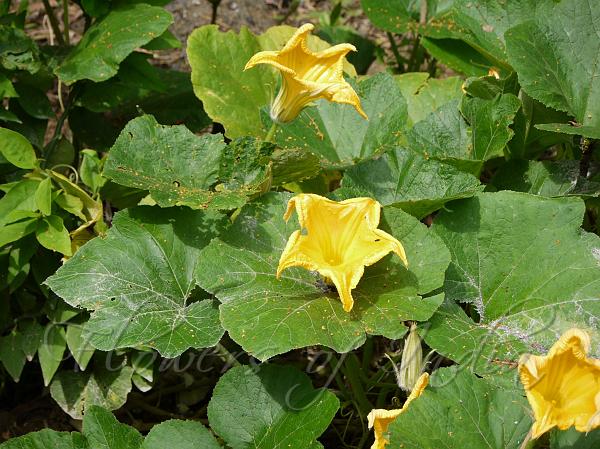|
| Giant Pumpkin |
|

|

| File size | 653097 |
| Original date | 9/12/09 10:03 AM |
| Resolution | 2048 x 1536 |
| Flash | Flash did not fire, auto |
| Focal length | 45.0mm |
| Exposure time | 1/400s |
| Aperture | 5.6 |
| Focus Distance | |
| Metering Mode | Multi-segment |
| Camera make | Panasonic |
| Camera model | DMC-G1 |
| Sensor type | OneChipColorArea |
|
|
|
|
Photo: |
Botanical name: Cucurbita maxima Family: Cucurbitaceae (Pumpkin family)
Giant Pumpkin is an annual climber growing up to 5 m at a fast rate.
The flowers are monoecious (individual flowers are either male or female,
but both sexes can be found on the same plant) and are pollinated by
Insects. The plant is self-fertile. Fruit is cooked and eaten. A
delicious flavour when baked, rather like a sweet potato. The flesh can be
dried, ground into a powder and used with cereals in making bread, cakes
etc. Some varieties can be stored for up to 9 months. Seed - raw or
cooked. The seed can also be ground into a powder and used with cereals in
making breads etc. Young flowers are eaten raw or cooked. They are often
dipped in batter and fried. Young leaves and stems are cooked and eaten.
Flowering: July-September.
Identification credit: Satish Pardeshi, Dinesh Valke
| Photographed at Tungareshwar Wildlife Sanctuary, Maharashtra. |